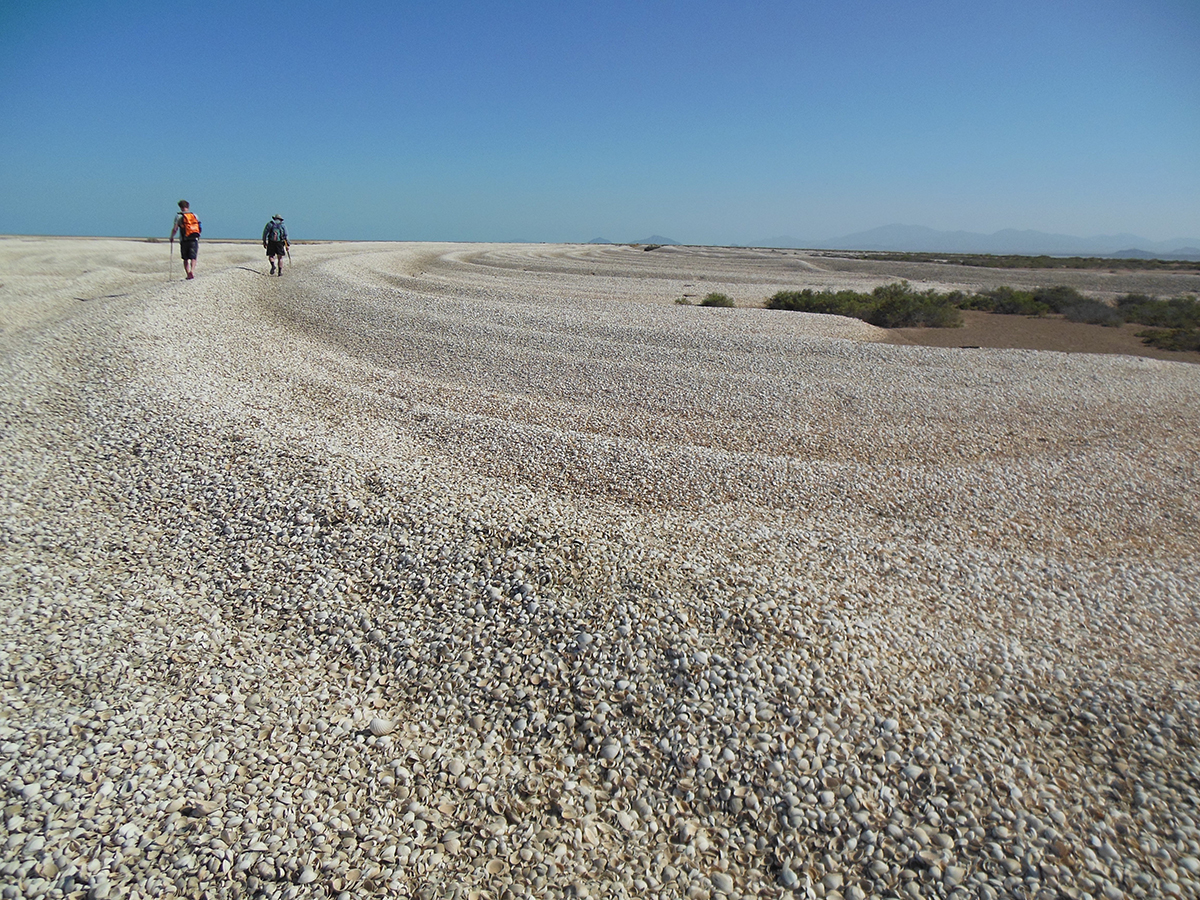Colorado River's dead clams tell tales of carbon emission
By Blaine Friedlander

Scientists have begun to account for the topsy-turvy carbon cycle of the Colorado River delta – once a massive green estuary of grassland, marshes and cottonwood, now desiccated dead land.
“We’ve done a lot in the United States to alter water systems, to dam them. The river irrigates our crops and makes energy. What we really don’t understand is how our poor water management is affecting other natural systems – in this case, carbon cycling,” said Cornell’s Jansen Smith, a doctoral candidate in earth and atmospheric sciences.
Smith is lead author of “Fossil Clam Shells Reveal Unintended Carbon Cycling Consequences of Colorado River Management,” published in the journal Royal Society Open Science, Sept. 28.
The new research, in collaboration with the University of Arizona and the Cornell-affiliated Paleontological Research Institution, provides a novel approach that combines biological and paleo methods to understand how a nearly dead river delta presents evidence of vast amounts of carbon being added to the atmosphere.
Smith said the river’s tidal flats should teem with clams. But thanks to 15 dams on the main river and hundreds more on its tributaries, the 1,400-mile-long, once-mighty Colorado drips to a trickle before emptying into Mexico’s Gulf of California. Based on estimates of washed-up clamshells that lived hundreds of years ago and the number of clams alive today, the researchers calculated the change of the river delta’s annual carbon cycle.
“You used to step on clams with every step you took,” he said. “Now, you don’t.”
While their shells are a natural carbon sink, living clams belch carbon dioxide as they breathe. A thriving delta can emit the carbon equivalent of about 15,000 cars annually, but the Colorado River’s clams have died off, emitting less carbon dioxide. Said Smith: “It would be tempting to say, ‘Look at this positive effect,’ but it is not positive.”
Large western cities like Los Angeles, Phoenix, Tucson and Las Vegas draw the Colorado’s water, while the carbon cost of transporting that water to cities and farms far outweighs the humble clam’s own emissions.
For example, the Colorado River’s waters cool the coal-fired Navajo Generating Station in Page, Arizona, a 2,250-megawatt power plant that supplies energy to California, Arizona and Nevada. The coal-fired electricity station emits the equivalent of 4.5 million cars annually – one of the largest carbon dioxide emitters in the United States.
Beyond the power plants, water is pumped from the river to places like Las Vegas to feed lavish water fountains or Arizona to water golf courses.
“The reduced carbon emissions at the delta – resulting from diverted flow, conveying water to Southwestern cities – are vastly outweighed by the carbon emissions to divert that flow,” said Smith. “We’ve supplanted a small, natural carbon emitter – the clam – with something far more detrimental to the atmosphere.”
The study’s authors include Daniel Auerbach, Office of Wetlands Protection and Restoration, U.S. Environmental Protection Agency; Alexander Flecker, professor of ecology and evolutionary biology at Cornell; Karl W. Flessa, professor of geosciences, University of Arizona; and Gregory Dietl, Cornell adjunct assistant professor of earth and atmospheric sciences, and the Paleontological Research Institution, Ithaca. Cornell’s College of Engineering funded Smith.
Media Contact
Get Cornell news delivered right to your inbox.
Subscribe